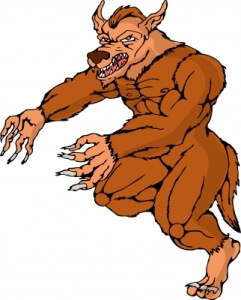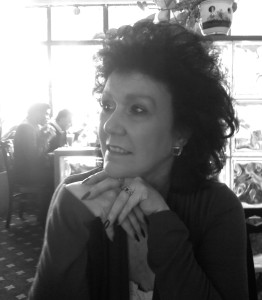 Our thanks to author and media relations expert Christina Hamlett for this guest post and to freedigitalphotos.net for the scary monster… Talk about character development…
Our thanks to author and media relations expert Christina Hamlett for this guest post and to freedigitalphotos.net for the scary monster… Talk about character development…
Like a lot of kids, I grew up thinking that monsters lived in my closet. I had no particular reason for believing this, nor did I ever ponder why they could be kept so easily at bay by a Tinkerbelle nightlight, an open bedroom door and a cadre of vigilant stuffed animals. Perhaps, though, I now credit my childhood angst for the adult rationale of keeping my walk-in closet stuffed with enough apparel that any monster dumb enough to get trapped inside would likely suffocate before he could inflict much harm.
Bogeyphobia (yes, that’s a real word) is a fearful state of mind that has probably been around since the dawn of mankind. They can arise from internal predispositions, exaggerated reactions to traumatic external events or just weary parents trying to keep their children in line with scary stories.
Fabricated “monsters” of any ilk share a common denominator of giving their intended victims a racing heart, rapid breathing, excessive sweating and uncontrollable shaking. Not only, you see, is it just the thought of impending death that causes them to quake with such dread but – thanks to Hollywood – the thought of meeting one’s demise in a particularly weird, painful and icky way.
By definition, a monster is a fictional creature that has sprung forth as a freak of nature or an experiment by man gone terribly wrong. Whether through hideous appearance, destructive actions or an amoral mindset, monsters serve just as much purpose in holding a mirror up to our own dark sides as they do in filling a proxy role for real-life sociopolitical threats.
In the 1950’s, for instance, movie themes involving invasions by outer space creatures were subliminal propaganda to remind us that Communists were malevolent bullies wanting to crush us. This was the same decade – fueled by post-atomic jitters – that begot plots in which unleashed radiation spawned giant ants, monster blobs and mutant crabs.
By the time we moved into the 80’s and 90’s, the public’s respective criticism of the American space program and the tweaking of DNA to produce clones like Dolly the sheep inspired fare such as the Alien and Jurassic Park film franchises as a graphic warning that persistent scientific curiosity could kill much more than just cats.
If you want to write horror stories that grip your readers’ imaginations, terrify their souls, and escalate pulse rates, there are some immutable laws of monster mashups they’ll expect you to observe. Specifically:
- The monster is either in circumstances beyond its control or intellect (and, thus, courts empathy) or purposely threatens our existence because (1) we’re in its way, (2) we’ve awakened a curse, (3) we represent a plentiful food source or (4) we destroyed something it loved.
- Monsters have a keen sense of smell, vision and/or hearing which always becomes more sharply honed as the story progresses and the pursued start to employ more cleverness in seeking out hiding places.
- The one person who figures out something is dangerously amiss and tries to warn others that precautions must be taken is (1) always laughed at and thought to be a kook, (2) often tries to befriend the monster or at least see its point of view, (3) sometimes dies by misjudging the monster’s motives, or (4) has a love interest that needs to be rescued from the monster’s clutches.
- To vanquish a rampaging monster, you must either employ the most high-tech gadgetry (that has presumably never been tested until now) or resort to something incredibly simple such as fire, water, mirrors, trip-wires, chasing it onto a glacier or throwing salt in its mouth. A reference to the method of destruction must be foreshadowed early in the plot (and probably by the same guy that everyone laughed at).
- Sometimes the monster wins. (We just don’t always know it.)
Here’s to bringing your own monsters to life! And remember to leave that light on….
 Christina Hamlett is a media relations expert and award-winning author whose credits to date include 30 books, 156 stage plays, 5 optioned feature films, and hundreds of articles and interviews that appear online and in national/international trade publications. In addition, she is a script consultant for the film industry (which means she stops lots of really bad movies from coming to theaters near you) and a professional ghostwriter (which does not mean she talks to dead people). Learn more at www.AuthorHamlett.com.
Christina Hamlett is a media relations expert and award-winning author whose credits to date include 30 books, 156 stage plays, 5 optioned feature films, and hundreds of articles and interviews that appear online and in national/international trade publications. In addition, she is a script consultant for the film industry (which means she stops lots of really bad movies from coming to theaters near you) and a professional ghostwriter (which does not mean she talks to dead people). Learn more at www.AuthorHamlett.com.

Along with the monsters in the closet, I believed I had killer rabbits that lived under my bed. Which was why I’d always take a running leap onto the mattress at bedtime so they couldn’t grab my ankles with their sharp little fangs and claws.
Thanks for this great article, Shari. I want to eventually write a horror story, and this give me a foundation for the scary monster.
Too funny! My monsters were always under the bed!
Thanks for sharing!
jane